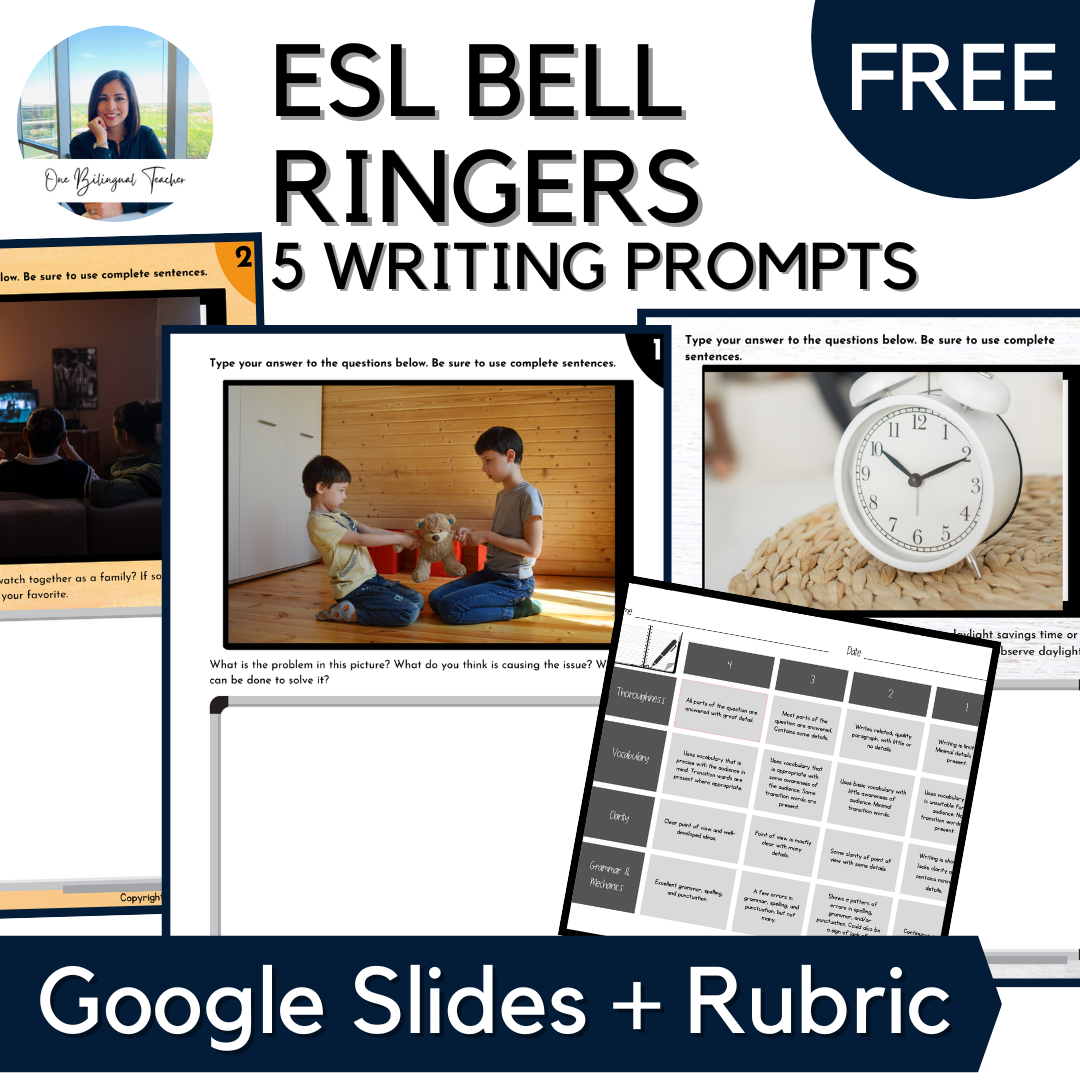Teaching ESL students to Write Personal Narratives
Teaching ESL students to write personal narratives is the easiest way to get them to write. Personal narratives give them the opportunity to bring out the stories that make up who they are. So, let's discover some ways to help our ESL students bring those stories to life in a way that makes sense to them and to the reader.
The Importance of Personal Narratives
Let's talk about why personal narratives are the best way to bring out ESL students’ language learning. First off, they engage our ESL students on a personal level. By connecting the language to their own experiences, we're creating a powerful motivator for them to express themselves. Also, personal narratives boost their confidence in storytelling and when shared, lets them explore different cultures and perspectives.
Preparing for Personal Narratives
Start by explaining the writing process in a simple, but thorough way, so they know what they're getting into. Then, have a brainstorming session to help them choose a topic that excites them. Don't forget to read aloud some personal narratives to get those creative juices flowing. Even reading a few paragraphs will help with illustrating how the process works. You can use a mind map to get them started.
Use Mentor Texts to Illustrate Personal Narratives
Brown Girl Dreaming, by Jacqueline Woodson: This memoir-in-verse tells the story of Woodson's childhood as an African American girl growing up in the 1960s and 1970s. It explores themes of family, identity, and finding one's voice.
El Deafo, by Cece Bell: This graphic novel memoir follows the author's experience growing up with a hearing impairment and her journey to navigate friendships, school, and self-acceptance. It combines humor and relatable experiences.
Inside Out & Back Again by Thanhha Lai: This novel-in-verse tells the story of Ha, a 10-year-old girl who flees Vietnam with her family and starts a new life in America. It explores themes of identity, adaptation, and resilience.
The Crossover by Kwame Alexander: This novel-in-verse centers around basketball-playing twins Josh and Jordan and delves into themes of family, brotherhood, and finding one's passion. It combines sports, rhythm, and emotional depth.
Wonder by R.J. Palacio: This bestselling novel follows the journey of Auggie Pullman, a boy with facial differences, as he enters middle school and faces challenges, friendships, and self-acceptance. It addresses themes of empathy, kindness, and embracing differences.
These mentor texts offer engaging and relatable personal narratives that middle school ESL students can connect with. They cover a range of experiences and themes, providing opportunities for discussions and reflections on identity, empathy, and resilience.
Planning and Organizing the Narrative
A good personal narrative needs a solid structure. Teach your ESL students about essential story elements like characters, settings, and plots. To help them organize their thoughts, have them use graphic organizers. This way, they'll have a roadmap to guide them through their storytelling adventure. I like to read the beginning of exciting chapters to give ESL students an idea of how to “hook” their readers.
Incorporating Descriptive Language
Encourage your ESL students to paint vivid pictures with their words. Teach them to sprinkle their stories with sensory details, so readers can practically smell the freshly baked cookies or feel the cool ocean breeze. Show, don’t tell!
Revising and Editing
Encourage peer editing and feedback sessions to make it fun and collaborative. Remind them to focus on grammar, spelling, and punctuation, but also to read their narratives aloud. Hearing their words will help them catch any hiccups or confusing parts. I like to pair my ESL students up and have them write notes where the writing needs to be revised. When they meet with each other they talk about their thoughts. It’s amazing how much they’ll listen to their peers more than their teacher!
Showcasing and Celebrating Personal Narratives
Now, it's time to roll out the red carpet for our ESL students' amazing narratives! Create a class anthology or a digital platform where they can proudly share their stories. One year, I had a “blog” where ESL students wrote their thoughts on a Google Slide deck that was linked to a shared Google Doc. Every Friday they would read two classmates’ entries and write a positive, appropriate comment about their stories. They absolutely loved to read each other’s comments!
In a Nutshell
Personal narratives are the bee's knees. Through these stories, our ESL students not only improve their language skills but also unleash their creativity and share their unique voices. Remember, teaching personal narratives can be a blast as long as ESL students are given the structure they need.




